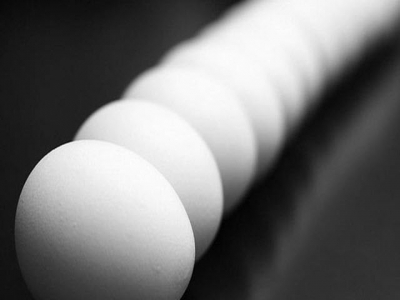Laying hen strains use resources in aviary systems differently

Different strains of commercial laying hens use given resources within an aviary system differently, which can influence bird health and bird behavior.
Ali discussed health, production and resource use by laying hens in an aviary during a presentation at the Poultry Science Assn. annual meeting in San Antonio, Texas.
“Different strains of commercial laying hens have been molded by varying selection pressures, impacting their product, health and behavioral traits. Therefore, assumptions that all laying hen strains use the given resources within aviary systems similarly and maintain equal health and performance may be false,” Ali said.
To examine that theory, Ali and colleagues examined the influence of laying hen strains (Hy-Line Brown, Bovans Brown, DeKalb White and Hy-Line W36) on resource use, egg production and health within an aviary system across the lay cycle. Risks associated with differences in hens’ resource use on egg production and health were calculated. Hens’ distribution among different resources (litter areas, nests, wire floors, ledges and perches) was recorded at different times of day (light or dark) for three consecutive days per production stage (peak lay: 28 weeks; mid-lay: 54 weeks and end lay: 72 weeks).
Daily egg production (total, nest-laid and non-nest-laid eggs) were recorded, and 15% of hens per unit were randomly selected and assessed for keel bone damage, foot health and plumage quality.
Observations were conducted in 16 aviary units (four units per strain, with 144 hens per unit). Strain differences were assessed. Production and health risks associated with hen resource use were assessed using multivariable regression modeling.
Among the findings reported by Ali were that, during the light time of day, brown hens used wire floors more than the white birds. A greater number of white hens were observed using perches, litter and ledges during the periods of light.
During the dark periods, brown hens were on lower-tier wire floors more than white hens, while the white hens occupied the upper tier at higher numbers.
Brown hens were found to have laid more eggs outside nests, showed lower incidences of keel fractures and deviations and had better plumage quality than white hens.
Ali said using the upper tier for nighttime roosting increased hens' odds of keel fractures 5.4 times. Use of perches was associated with higher odds of keel deviations and lower odds of foot lesions and poor plumage quality in all strains across the lay cycle.
Finally, lower odds of non-nest egg laying were associated with white hens, while higher odds of non-nest egg laying resulted from the higher use of nests and litter areas in all strains across the lay cycle.
This work showed that distinct strain differences in resource use in an aviary were associated with different risks to hens’ production, health and welfare, Ali concluded.
Related news
 Sydney study links feed factors to feather pecking
Sydney study links feed factors to feather pecking Several factors identified in incidence of feather pecking by free-range hens.
 Enriching free range chickens and reducing feather pecking
Enriching free range chickens and reducing feather pecking Studies by Australia’s Poultry CRC have looked at whether encouraging birds into the range leads to less feather pecking
 Nutrition, feeding issues impact broiler breeder feathering
Nutrition, feeding issues impact broiler breeder feathering Industry professional discusses how uniformity of feed in broiler breeder females helps pullets in feathering and fertility